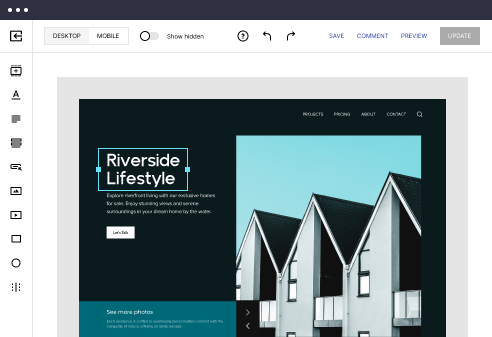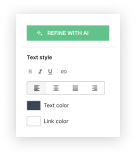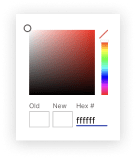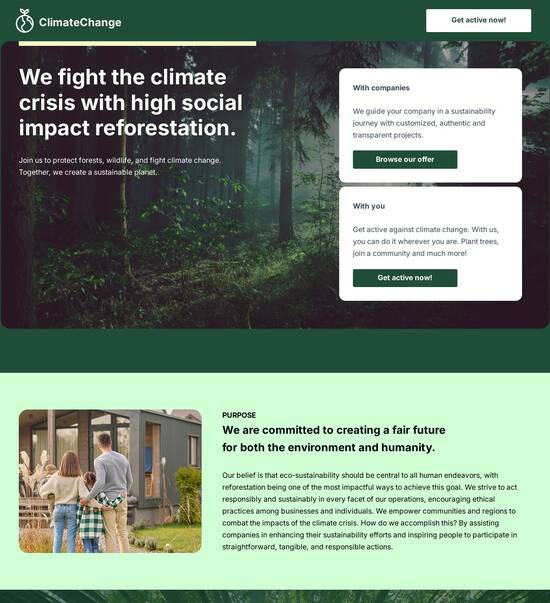
React.js optimized blog page templates
Explore Similar TemplatesAbout template
Make the most with React.js optimized blog page templates. Drive your success today.
Recommended templates
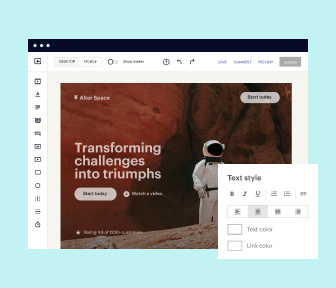
Easy to build without coding
With the intuitive drag-and-drop builder, anyone on your team can create high-converting pages without any knowledge of code or design. Make enhancements to your landing page with custom widgets using Javascript, HTML/CSS, or third-party scripts.
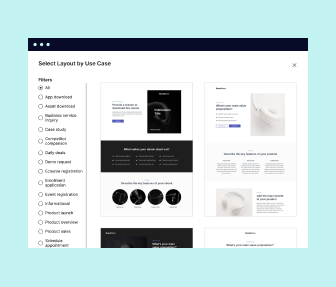
Multiple layouts for any industry and goal
Select from 500+ landing page layouts built to boost conversions across industry-specific scenarios. Customize them by adjusting fonts, adding images, and generating on-brand content with the AI assistant. Quickly scale with Instablocks® and Global Blocks that you can save, reuse, and update globally.
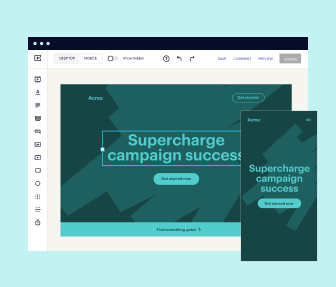
Loads fast and looks polished on any device
Every template is responsive, which means they present professionally on any device and load blazingly fast with our Thor Render Engine. You can also power them up with Google AMP technology to deliver an unparalleled mobile experience and drive higher conversions.
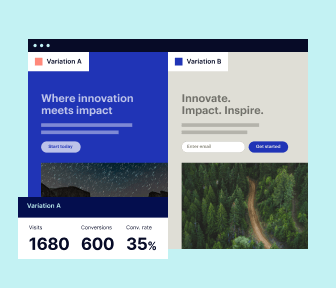
Robust analytics & experimentation
Get real-time updates and reporting across all your devices, showing the number of visitors, conversions, cost-per-visitor, and cost-per-lead. Launch AI-powered experiments, run A/B tests, and use heatmaps to analyze user behavior, then optimize your landing page to maximize conversions.

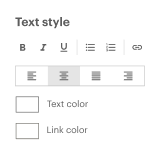
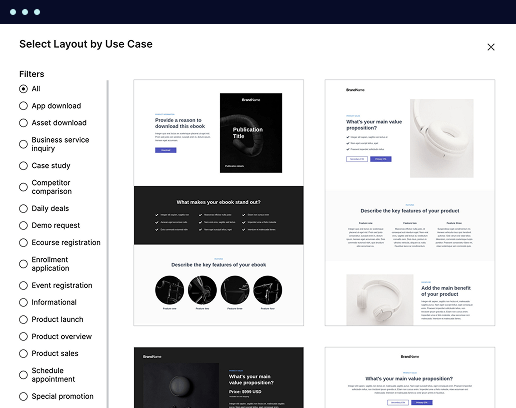
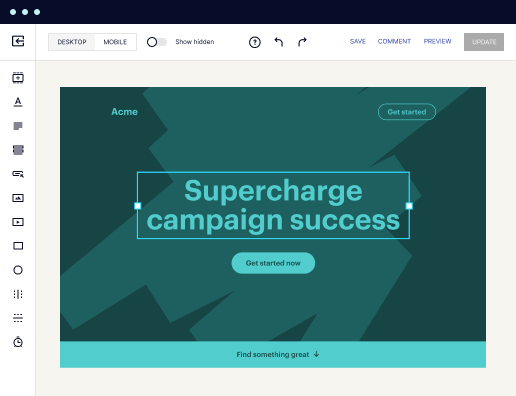
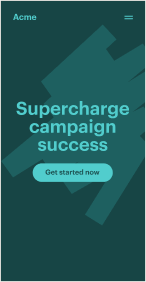
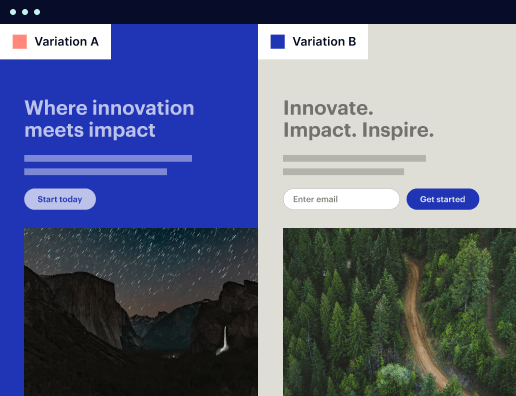

Easy to build without coding
With the intuitive drag-and-drop builder, anyone on your team can create high-converting pages without any knowledge of code or design. Make enhancements to your landing page with custom widgets using Javascript, HTML/CSS, or third-party scripts.
Multiple layouts for any industry and goal
Select from 500+ landing page layouts built to boost conversions across industry-specific scenarios. Customize them by adjusting fonts, adding images, and generating on-brand content with the AI assistant. Quickly scale with Instablocks® and Global Blocks that you can save, reuse, and update globally.
Loads fast and looks polished on any device
Every template is responsive, which means they present professionally on any device and load blazingly fast with our Thor Render Engine.
Robust analytics & experimentation
Get real-time updates and reporting across all your devices, showing the number of visitors, conversions, cost-per-visitor, and cost-per-lead. Launch AI-powered experiments, run A/B tests, and use heatmaps to analyze user behavior, then optimize your landing page to maximize conversions.
All the features you need to build blog react template
Explore more featuresLearn how to build reactjs blog template
Frequently asked questions about react template blog
Leading the way in building high-performing landing pages





Maximize your ROI with Instapage: The leading landing page and CRO platform
In the competitive landscape of digital marketing, leveraging a powerful landing page solution is crucial for maximizing ROI. Instapage serves as an all-in-one platform that equips marketers with the essential tools to rapidly accelerate, optimize, and scale their campaigns. With a range of features tailored for organizations of all sizes and budgets, Instapage simplifies the landing page creation process while enhancing campaign effectiveness.
Getting Started with Instapage
The journey begins with easy navigation within Instapage’s user-friendly environment. This section outlines the fundamental steps to harnessing the platform's capabilities for your campaigns.
- Choose from over 100 high-converting templates tailored for various industries, such as financial services and education.
- Utilize the intuitive builders and libraries to customize your landing page without the need for coding skills.
- Leverage pre-built lead generation elements to enhance your conversion rates from day one.
Optimizing Your Landing Pages
Optimization is key to driving better results. Instapage offers tools that allow you to fine-tune your content for higher conversions and increased lead generation.
- Implement A/B tests to experiment with different designs and content to find what resonates best with your audience.
- Use heatmaps to gain insights into user interactions and optimize on-page elements.
- Access an analytics dashboard to monitor performance and identify areas for improvement.
Personalizing Experiences for Your Audience
Creating personalized content is essential for capturing your diverse audience's attention. Instapage allows marketers to tailor their messaging and design on a granular level.
- Employ dynamic text replacement to reflect the unique interests of different user segments.
- Connect specific ads to unique landing pages using AdMaps, ensuring your messaging aligns with what prompted user engagement.
- Track audience-level metrics to further refine your personalization strategy.
Collaborating with Stakeholders
Fast-paced marketing environments require efficient collaboration among teams. Instapage’s features facilitate streamlined communication.
- Enable real-time edits and feedback to expedite the page production process.
- Securely share pages with external stakeholders to gather insights and approvals quickly.
- Utilize collaborative tools to enhance team productivity and ensure alignment on project goals.
By following these steps, you can fully leverage Instapage to bring your digital marketing campaigns to the next level.
Explore Instapage today to transform your landing pages into high-converting funnels that maximize your marketing efforts. Get started now and see the difference.
People also ask about React.js optimized blog page template
Crafting a ReactJS optimized blog page template
The landscape of modern blogging
Blogs have transformed into essential digital assets for businesses and individuals alike. They serve as entry points to deeper content and allow brands to establish a presence in various online spaces. As the digital landscape evolves, blogs have become platforms for storytelling, sharing insights, and engaging directly with audiences. Over time, the statistics show that blogs significantly drive web traffic and enhance engagement. According to recent studies, companies with blogs receive more than 400% more indexed pages in search engines, translating to higher visibility and user interaction.
However, with the exponential growth of online content, optimizing these blogs for performance has become non-negotiable. Fast-loading pages not only improve user experience but are crucial for retaining readers. Research indicates that 47% of users expect a web page to load in two seconds or less, and any delay can lead to increased bounce rates. Furthermore, with a significant percentage of all web traffic coming from mobile devices, ensuring that blog pages are optimized for speed across all devices can markedly improve engagement rates.
Understanding the blog's role in digital presence.
The importance of optimization for page speed and SEO.
Building the foundation: ReactJS as a powerful blog framework
Choosing the right framework is fundamental when developing a blog page. ReactJS, with its component-based architecture, stands out as an ideal choice. This library, developed by Facebook, allows developers to create reusable UI components, encouraging a modular approach to coding. This not only enhances efficiency but also makes it easier to maintain and scale the application over time. With ReactJS, developers can construct complex user interfaces simply and effectively, ensuring a smooth development process.
Additionally, ReactJS's Virtual DOM optimizes rendering speeds by updating only the parts of the page that change, rather than the entire page. This leads to enhanced responsiveness and interactivity, benefiting user experience. Users are less likely to leave a blog that loads quickly and responds fluidly to their actions. As users scroll through content smoothly and interact with features seamlessly, the likelihood of engagement and return visits increases.
Core features of an optimized blog page template
When crafting an optimized blog page using ReactJS, structuring your content effectively is crucial. A well-organized layout improves user navigation, making it easier for readers to find content that interests them. Utilizing blog post previews in card formats is a popular approach that allows users to see snippets of multiple posts at a glance. Each card can include an image, title, and a short excerpt, enticing users to click and read more.
Dynamic routing is another essential feature of an optimized blog template. Implementing nested routes categorizes content logically, aiding visitors and search engines alike. Clean URLs significantly enhance SEO; instead of long, cumbersome links, creating short, descriptive URLs can improve search engine rankings and make content easier to share. Lastly, ensuring your blog is equipped with SEO capabilities right from the start is vital. This can involve integrating meta tags and schema markup to enhance visibility in search results and ensuring that blog post titles and descriptions follow best practices.
Enriching user interaction
A comments section can be a game changer in fostering community on your blog. By allowing users to share their thoughts, you not only enhance engagement but also encourage dialogue among readers. Real-time commenting systems provide immediate feedback, while moderation tools ensure that conversations remain constructive. Choosing how you enable this feature is essential; whether through built-in options or third-party integrations, the aim is to create a welcoming environment for discussion.
Moreover, incorporating sharing buttons fosters shareability of your blog content, significantly broadening your reach. When positioned strategically within the blog, these buttons encourage readers to share posts across their social media channels, potentially driving new traffic to your page. You can measure the impact of social shares through analytics tools, allowing you to adjust your strategy based on what resonates most with readers.
The next level: Advanced features for enhanced usability
To elevate the user experience further, integrating search functionality on your blog can vastly improve navigation. Implementing intuitive search algorithms will allow users to find specific content quickly and efficiently. Considering user experience during this process is paramount; the interface for searching should be straightforward and quick without overwhelming the visitor with filters they may not use.
In addition to search, providing filters and sorting options enhances user control. Permitting readers to filter posts by categories, publish dates, or popularity ensures they can discover content that best suits their interest levels. This tailored experience keeps users engaged longer and encourages them to explore various posts. A search table showcasing blog metadata further boosts usability, giving visitors a comprehensive overview of available content at a glance.
Optimizing performance for peak efficiency
Performance optimization is critical in maintaining user engagement. Code splitting and lazy loading techniques are pivotal in improving page load times, especially for larger blogs containing multiple images and scripts. Code splitting allows you to load only the necessary code needed for the initial render, while lazy loading defers loading of off-screen images until they're needed. Together, these strategies significantly enhance user experience by reducing latency.
In conjunction with coding techniques, image optimization is another vital aspect to consider. Choosing appropriate formats and resolutions for blog images impacts load speed directly. For instance, using image formats like WebP can deliver quality visuals at smaller file sizes. Additionally, employing image compression tools invisibly reduces file sizes without sacrificing quality, further ensuring that your blog maintains commendable loading speeds and user satisfaction.
Enhancing aesthetic appeal with UI/UX design
An aesthetically pleasing blog is design-sensitive, and adhering to responsive design principles is crucial. A mobile-first approach ensures that your blog is accessible to users on all devices. Implementing flexible grid layouts and scalable images allows for an adaptive site that looks great on smartphones, tablets, and desktops. This consistency enhances usability and contributes to positive user experiences.
Additionally, the psychological implications of color schemes and font choices cannot be overlooked. Different colors evoke various emotions, which can influence reader engagement levels. It's essential to choose colors that align with your brand while ensuring that your blog is readable and visually engaging. Furthermore, selecting legible fonts and maintaining a consistent style throughout your blog will improve accessibility and offer readers a more enjoyable experience.
Practical implementation: Step-by-step guide to creating a blog page
To create your blog page with ReactJS, first, you'll need to set up your environment. Essential tools and libraries such as Create React App, React Router, and Axios for data fetching are fundamental in this process. With these in place, initial boilerplate code can set the groundwork for your template, streamlining future development.
Once your environment is ready, focus on developing the blog template by breaking down components into manageable sections such as Header, Footer, Post List, and Single Post. Utilizing React Hooks for state management and side effects allows for a more fluid data handling experience. Lastly, remember that deploying the blog is also crucial; exploring various hosting options such as Vercel or Netlify can simplify this process. Implementing best practices for continuous integration will ensure that your blog remains up-to-date and runs seamlessly.
Measuring success: Analyzing blog performance
With your blog up and running, tracking its performance is essential to gauge success. Key performance indicators (KPIs) provide invaluable insights into user engagement and content effectiveness. Metrics such as views, session duration, bounce rates, and user demographics should be regularly monitored using analytics tools like Google Analytics. This wealth of data can inform future content strategies and highlight areas for improvement.
Additionally, A/B testing can be a powerful tool for optimizing user experience. Setting up experiments allows you to analyze how different layouts or content structures perform relative to one another. Interpreting these results will enable you to make data-driven decisions, iteratively enhancing your blog over time. Adapting content and layout based on these insights can lead to improved user satisfaction and increased traffic.
Community building through blogging
Building a community around your blog can significantly enhance engagement and loyalty among readers. Allowing user-generated content, such as guest posts, fosters a sense of ownership and belonging among visitors. By encouraging contributions, you not only diversify your content but also create a more inclusive atmosphere that invites various perspectives.
Furthermore, strategies for promoting newsletters and subscriptions to engage readers beyond individual posts could lead to a robust community. Regularly sharing updates and personalized content through email campaigns will encourage subscribers to return to your blog. Building a loyal following on social media and engaging directly with readers can add significant value, allowing you to cultivate relationships that extend beyond the blog itself.
The future of blogging with ReactJS
As the digital landscape continues to shift, staying ahead of emerging trends and technologies in blogging is vital. Exploring integrations with various APIs can enhance your blog's functionality and appeal. For instance, incorporating external content like podcasts or video integrations can enrich the user's experience and keep them engaged longer.
Moreover, the potential of AI in personalizing user content cannot be underestimated. Utilizing machine learning algorithms to offer tailored recommendations based on user behavior can significantly enhance the reader’s experience. Gathering user feedback systematically allows for continuous evolution based on real needs. Adapting blog features in response to this feedback ensures that you consistently cater to user expectations.
Ready to skyrocket conversions?
Supercharge your ad campaigns with high-performing landing pages
Get started